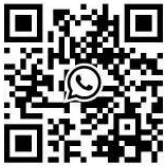Ultrasonic sensors
are widely used in life. Today, FBelec
will explain the ultrasonic testing for you.
According to the characteristics of the object to be detected, such as volume, material, and whether it is movable,HC-SR04 ultrasonic sensors
Distance Sensor use different detection methods. There are four common detection methods as follows:
Penetrating type: The transmitter and receiver are located on both sides, and when the detected object passes between them, the detection is performed according to the attenuation (or occlusion) of the ultrasonic wave.
Limited distance type: The transmitter and receiver are located on the same side. When a detected object passes within a limited distance, the detection is performed according to the reflected ultrasonic waves.
Limited range type: The transmitter and receiver are located in the center of the limited range, the reflector is located at the edge of the limited range, and the reflected wave attenuation value when there is no object to be detected is used as the reference value. When an object to be detected passes through within a limited range, the detection is performed according to the attenuation of the reflected wave (compare the attenuation value with the reference value).
Retro-reflective type: The transmitter and receiver are located on the same side, and the detection object (plane object) is used as the reflective surface, and the detection is performed according to the attenuation of the reflected wave.
Test results: There is no reflection of the ultrasonic sensor directly tested with a multimeter. To test the quality of the ultrasonic sensor, you can build an audio oscillator circuit. When C1 is 390OμF, an audio signal of about 1.9kHz can be generated between the ⑧ and ⑩ pins of the inverter. Connect the ultrasonic sensor (transmitting and receiving) to be detected between feet ⑧ and ⑩; if the sensor can emit audio sound, it can basically be determined that the ultrasonic sensor is good. Note: When C1=3900μF, it is about 1.9kHZ; when C1=0.01μF, it is about 0.76kHZ. The basic principle of ultrasonic measurement of liquid level is: the ultrasonic pulse signal sent by the ultrasonic probe propagates in the gas, and is reflected after encountering the interface between the air and the liquid. After receiving the echo signal, the propagation time of the ultrasonic round-trip is calculated. , you can convert the distance or liquid level height.
The ultrasonic measurement method has many incomparable advantages over other methods: (1) It does not have any mechanical transmission parts and does not contact the liquid to be measured. It is a non-contact measurement and is not afraid of electromagnetic interference and strong corrosive liquids such as acid and alkali. Stability, high reliability and long life; (2) Its short response time can easily realize real-time measurement without lag. The operating frequency of the ultrasonic sensor module used in the system is about 40kHz
. The ultrasonic pulse is sent out by the transmitting sensor
, transmitted to the liquid surface and then returned to the receiving sensor after being reflected, and the time required for the ultrasonic pulse from transmission to reception is measured. According to the speed of sound in the medium, the distance from the sensor to the liquid surface can be obtained. , to determine the liquid level
. Considering the influence of ambient temperature on the propagation velocity of ultrasonic waves, the propagation velocity is corrected by the method of temperature compensation to improve the measurement accuracy. The calculation formula is: V=331.5+0.607T (1) In the formula: V is the propagation speed of ultrasonic waves in the air; T is the ambient temperature. S=V×t/2=V×(t1-t0)/2 (2) In the formula: S is the measured distance; t is the time difference between transmitting the ultrasonic pulse and receiving its echo; t1 is the ultrasonic echo receiving time; t0 is the transmission time of the ultrasonic pulse. Using the capture function of the MCU can easily measure the time t0 and time t1. According to the above formula, the measured distance S can be obtained by software programming. Since the MCU of this system selects a mixed-signal processor with SOC characteristics, which integrates a temperature sensor, the temperature compensation of the sensor can be easily realized by software.
Founded in 1997, FBelec is a high-tech company specializing in the development, production, sales and supporting services of ultrasonic technology applications. And won the honorary title of Zhejiang High-tech Enterprise and National High-tech Enterprise. After decades of development, the company has accumulated strong technical research and development strength and experience, and has always maintained a leading position in the industry.
If you have questions about ultrasound technology, please contact FBelec
. Contact number 18868647636










